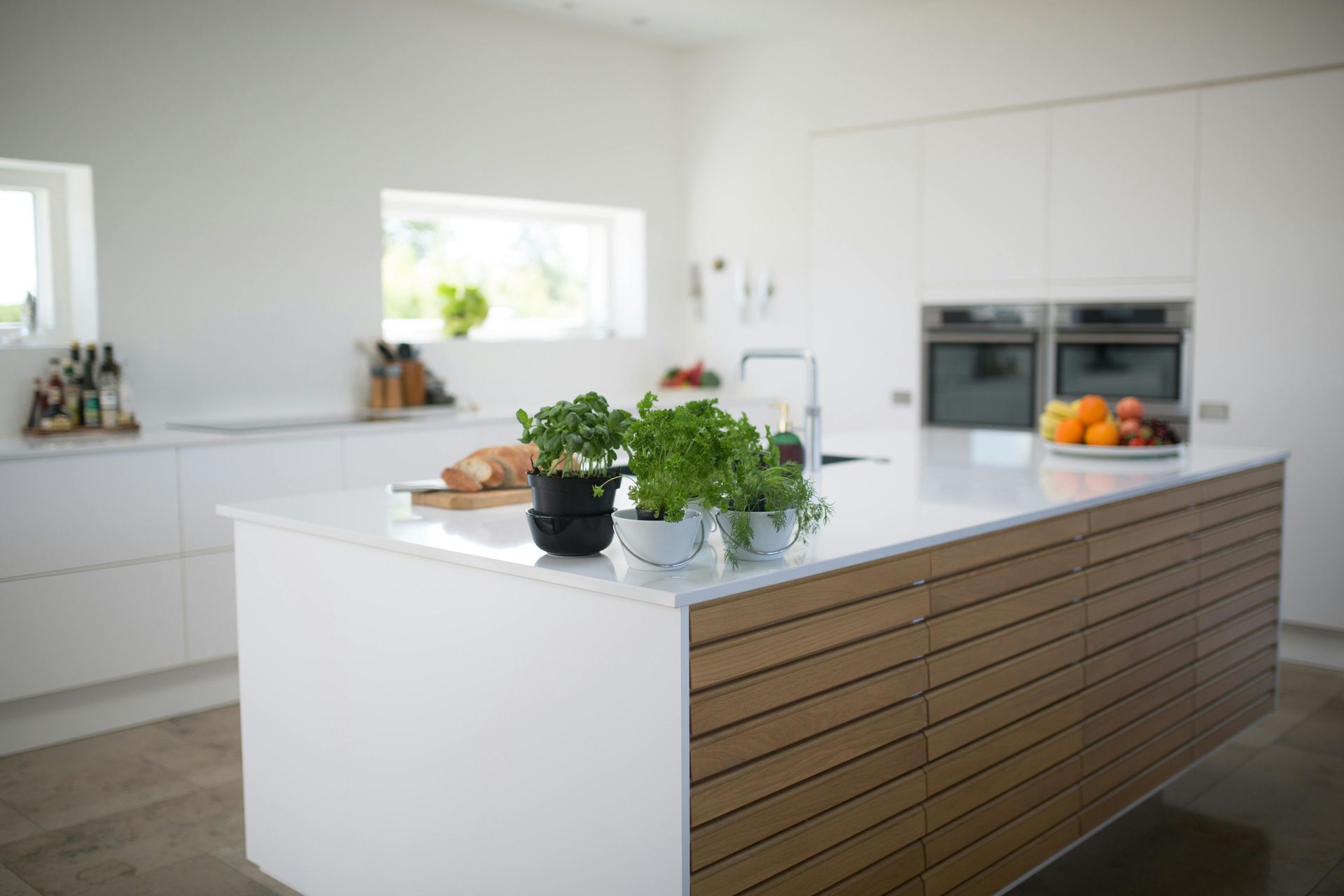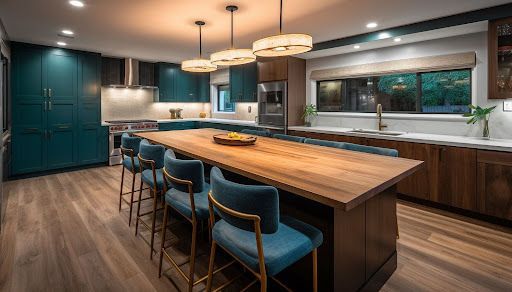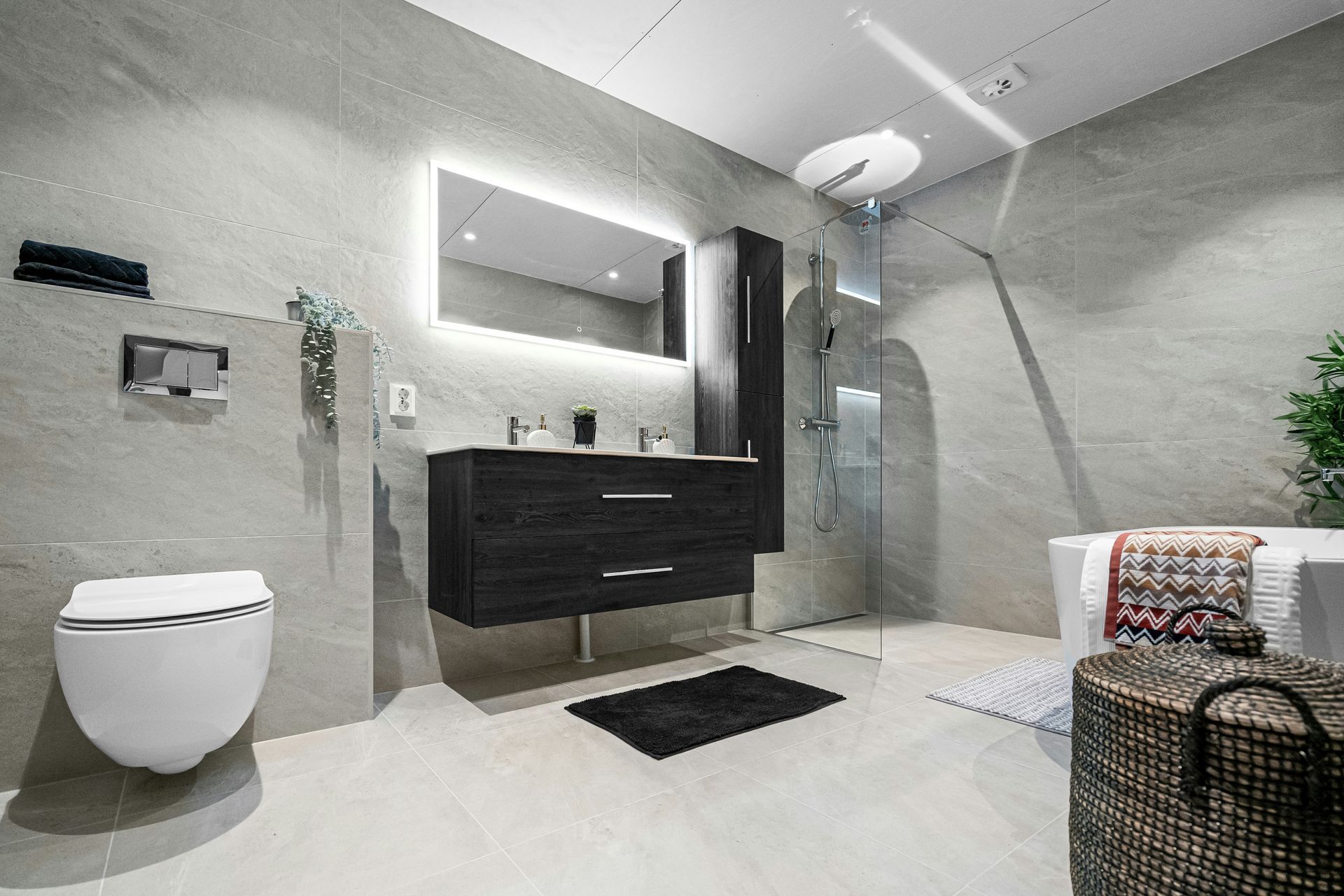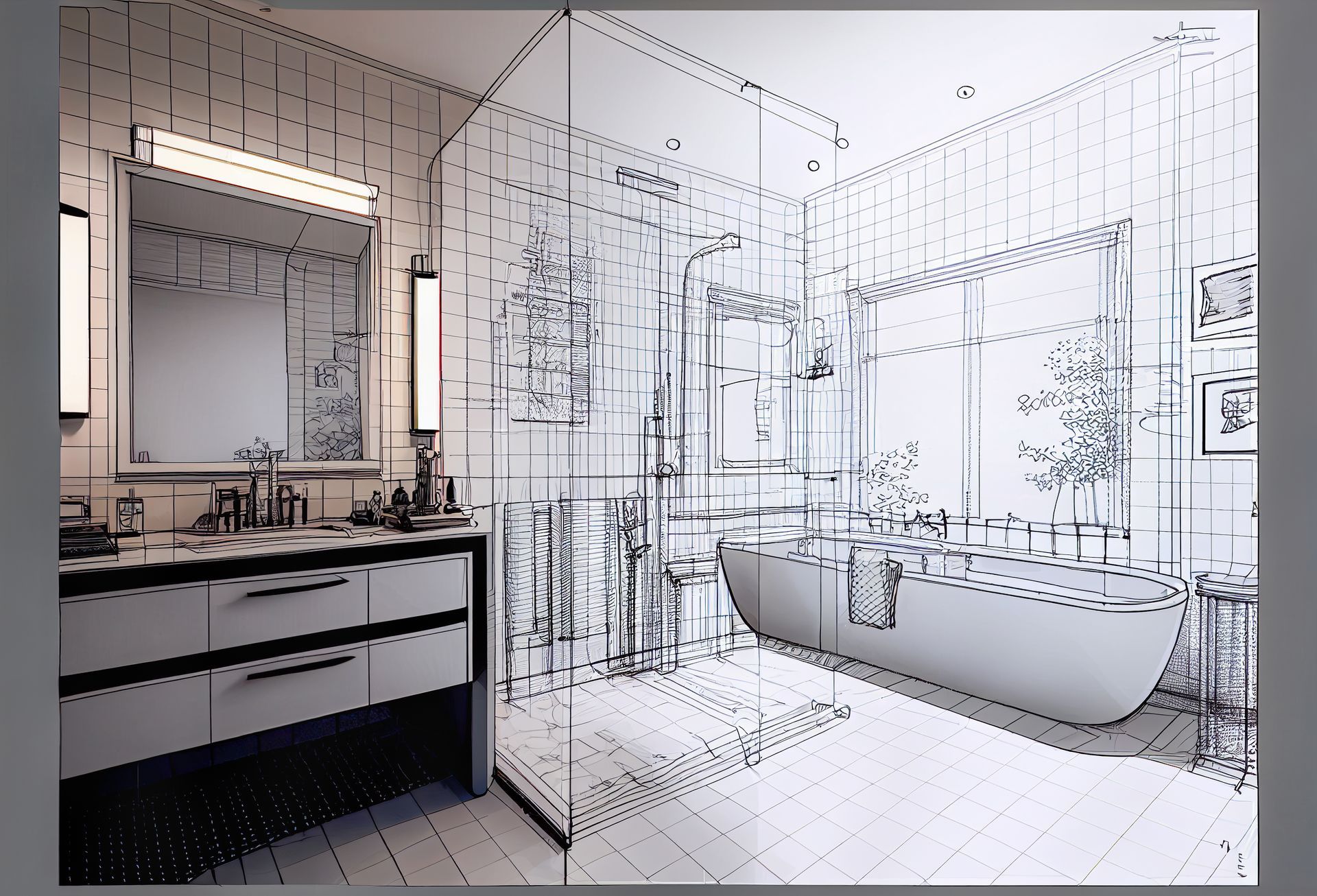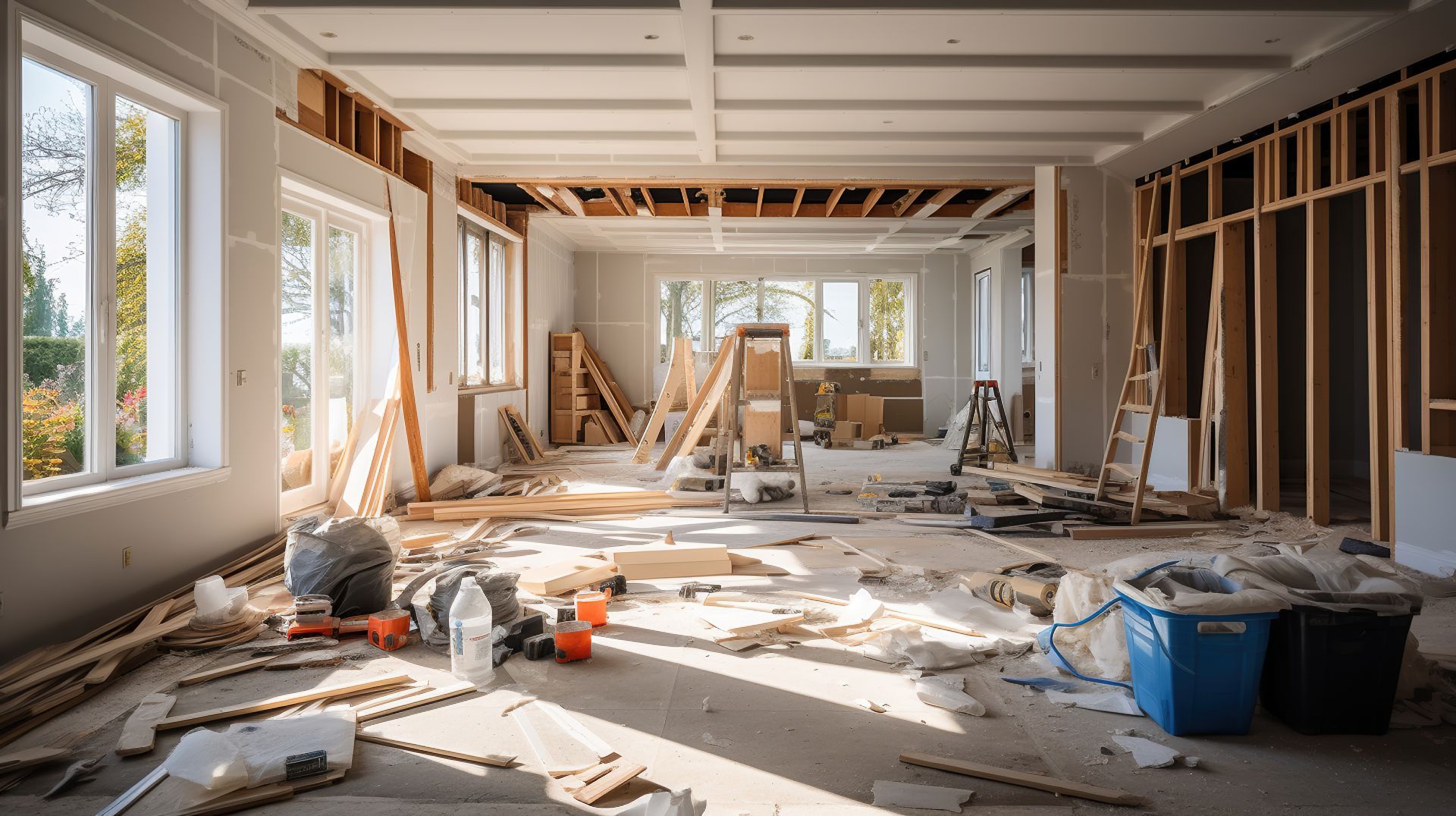April 13, 2025
Choosing the right combination of materials can significantly transform a home’s interior, turning a once-ordinary living space into an eye-catching and functional haven. When it comes to home remodeling, mixing materials—such as wood, metal, glass, and stone—can create visual variety, improve durability, and add unique character. From kitchens and bathrooms to living rooms and outdoor areas, these distinct elements infuse both modern and timeless styles. Embracing mixed materials goes beyond aesthetics, too. It plays a significant role in how you experience each room’s ambiance, comfort level, and functionality. Below, we will explore the ways you can skillfully blend materials while balancing an overall coherent style. Balancing Warmth and Coolness for a Cohesive Look One of the longest-standing combinations in home design involves pairing wood with metal. Wood brings warm tones, organic textures, and a sense of comfort; metal offers sleek edges, polished finishes, and a contemporary vibe. By juxtaposing these two, homeowners gain the best of both worlds—and avoid a space that feels one-dimensional. Natural materials like wood enhance the feeling of warmth and coziness, making them a favorite for everything from flooring to ceiling beams. Meanwhile, details crafted from stainless steel, copper, or brushed bronze can introduce a modern flare in countertops, door handles, and exposed light fixtures. Finding balance is key: for instance, pairing a wood accent wall with metal-framed mirrors or sconces can tie various design aspects together without clashing or overwhelming a room. Embracing the Elegance of Glass and Stone Combining glass and stone provides an entirely distinct aesthetic. Glass reflects light, helping a room feel bright and open, while stone (from granite to marble and quartz) introduces durability and a grounding element. Glass’s visual lightness keeps lavish stone surfaces from feeling too heavy. Together, they create an appealing contrast that brings sophistication to kitchens, bathrooms, or even fireplaces. In many modern kitchens, large stone countertops serve as focal points, and adding glass backsplashes can further highlight the beauty of the stone’s veins or unique patterns. Open shelving made of tempered glass can showcase decorative items while maintaining an airy feel. Incorporating these features in home remodeling projects addresses both elegance and practicality, as stone surfaces hold up exceptionally well under everyday wear and tear, while glass accents are easily cleanable and timeless in appearance. Strategic Placement to Maintain Coherence While mixing materials can be thrilling, keeping a harmonious flow throughout the home ensures the design remains cohesive. Pay attention to transitions from one room to the next. If the entryway features a wood-and-metal or wood-and-stone accent, continue some element of that blend inside the living room or along hallways. Subtle repetition such as metal trim on doors or stone details around fireplace mantels maintains design unity. Color palettes play a significant role. Neutral base hues, like tans, grays, and off-whites, can tie contrasting materials together. Meanwhile, vibrant accent colors—think deep blues, terracotta, or sage green—can be layered through textiles and smaller décor items. This approach avoids overwhelming the space with too many competing colors or patterns. Maintaining a sense of visual balance can be as simple as echoing a material’s tone with similar-colored fixtures and soft furnishings. This strategy fosters a dynamic yet consistent “flow” from room to room. The Allure of Texture in Mixed Materials Beyond visual interest, texture is a fundamental element in mixed-material design. Rough, natural wood surfaces contrast beautifully with slick metal or polished stone. Mixing different finishes—like matte, glossy, and hammered—keeps your environment from looking flat. For instance, combining matte black hardware with glossy tile can produce a dramatic look in a bathroom. Layering rough-cut stone panels on a feature wall, accompanied by smooth wood floors, offers a balanced play of textures, further refined by metal accents around lighting fixtures. Feeling these contrasting textures also enhances the user’s tactile experience, making the home feel lived-in and inviting. Practical Considerations for Durability and Maintenance When combining multiple materials, homeowners should also consider functionality. Some materials may require extra care or have limitations. For example, while natural wood floors provide warmth, they can show scratches or moisture damage if not sealed and maintained properly. Polished stone requires sealant to prevent stains, particularly in high-traffic areas like kitchens or entryways. Glass features—from railings to tabletops—demand regular cleaning to maintain a pristine appearance but are relatively simple to wipe down. Selecting high-quality components ensures the renovation stands the test of time. Investing in durable products can potentially reduce long-term maintenance costs and preserve a home’s resale value. Ultimately, professional consultation helps homeowners select materials that align with both their aesthetic vision and practical demands. Using Mixed Materials for Outdoor Spaces Many homeowners are extending indoor design concepts to outdoor living areas. Wooden decks paired with metal railing systems deliver a harmonious fusion of rustic charm and modern lines. Incorporating stone pavers around a pool or garden walkway can also integrate seamlessly with a stone fireplace or built-in grill station. Glass barriers or screens around an outdoor dining area offer wind protection and retain open sightlines. By thoughtfully repeating these mixed-material patterns, you create a sense of continuous design that links indoor and outdoor spaces. Not only does this approach elevate curb appeal, but it also maximizes your home’s usable living area. Linking It All Together Incorporating multiple materials in home remodeling projects yields striking results when done with purpose. Blending the warmth of wood with the edge of metal, the clarity of glass with the solidity of stone, or other creative combinations can enhance both form and function. Each element contributes unique qualities, ensuring that no two rooms look or feel exactly the same. By approaching mixed-material design with thoughtful consideration of color, texture, and durability, homeowners can craft spaces that are both inviting and one-of-a-kind. Endeavoring to bring cohesiveness throughout the home, a well-executed plan ensures that every aspect—from flooring and walls to fixtures and finishes—works together seamlessly. Mixed materials allow for personalization and timeless appeal, making them a perfect choice for those looking to push beyond the ordinary while maintaining a cohesive style. Contact Vostok Construction If you’re thinking about unifying different materials in your home, reach out to our experts at Vostok Construction to discuss your remodel plans. Our team can help guide you through selecting high-quality components and orchestrating that perfect balance of textures. We look forward to partnering with you to create a home that reflects your distinct tastes and elevates your living experience.
